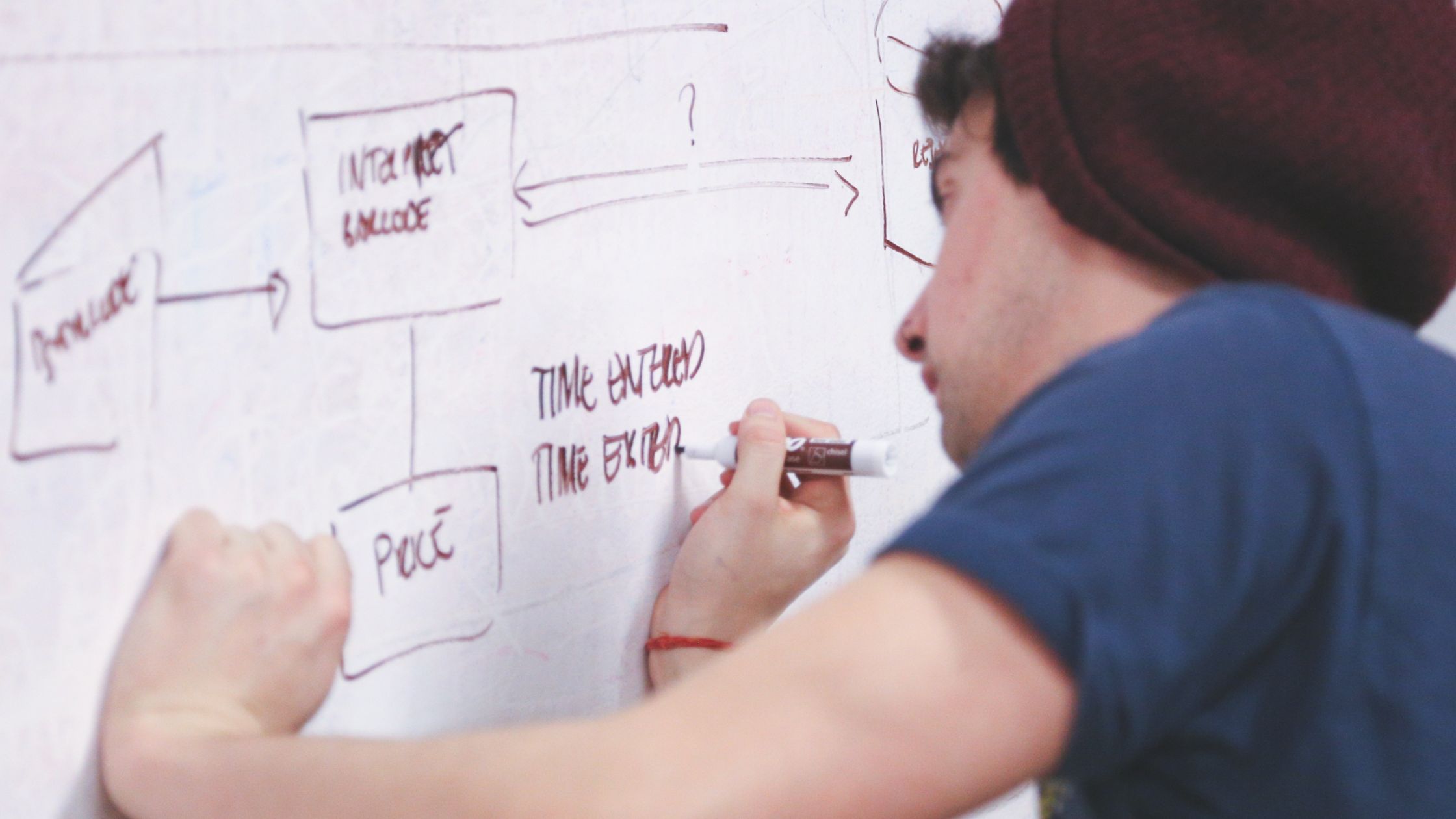Workflow diagrams are like the visual storytellers of your organization, shedding light on your processes in a way that’s easy for everyone to grasp and improve. Think of them as the magic wand that transforms complex workflows into clear, understandable tales, making it a breeze to dive in, analyze, and fine-tune your operations.
These diagrams, often referred to as process flowcharts, are your artistic canvases for illustrating tasks and steps. They take the intricacies of your processes and turn them into a colorful, visual journey.
Whether you’re a small business owner, a project manager, or part of a large corporation, understanding workflow diagrams can significantly improve your organization’s processes.
Workflow Diagram vs. Other Process Mapping
Workflow diagrams aren’t the only stars in the process of mapping a galaxy; they have some talented co-stars, each with its unique role. Let’s do a quick spotlight on the main players:
Flowcharts
Flowcharts are the all-rounders of the group. They’re like the Swiss Army knives of visual representation, capable of illustrating various processes, including workflows.
Flowcharts use common symbols like rectangles, diamonds, and arrows to show processes, and they’re quite versatile.
Swimlane Diagrams
Swimlane diagrams, also known as cross-functional flowcharts, put the spotlight on interactions between different departments or individuals in a process.
They’re your go-to choice when you’ve got a cast of characters from multiple departments, and you need to keep track of who’s doing what. Swimlanes act as visual dividers, clearly showing responsibilities and handovers.
Gantt Charts
Gantt charts are like the choreographers of project management. They choreograph tasks over time, ensuring that everything dances to the same beat. These charts are great for project managers, helping them understand the rhythm and harmony of timelines and dependencies between various activities.
However, when it comes to granular details of process steps, they might not steal the show in the same way as workflow diagrams.
The Best Time to Use a Workflow Diagram
Workflow diagrams are like Swiss Army knives – they can handle a variety of tasks. Here’s when they’re the hero you need:
Process Optimization
If you’re on a mission to uncover bottlenecks, streamline operations, or find areas in need of a makeover, a workflow diagram is your trusty sidekick. It paints the whole process before your eyes, highlighting where improvements can shine. In complex engineering and maintenance operations, research proves that diagrams improve task efficiency.
New Process Design
When you’re crafting a brand-new process, a workflow diagram is your architect’s blueprint. If you’re a business, this is where you start upon finalizing a business model canvas.
It maps out every step, ensuring each one plays its part in the grand design. each one plays its part in the grand design.
Communication and Training
Workflow diagrams are the storytellers of the business world. They speak a universal language, simplifying complex processes into easy-to-follow tales. Whether you’re introducing new recruits, briefing clients, or rallying stakeholders, these visuals bridge the communication gap.
| ✅ Tip: Use workflow diagrams along with an informative knowledge base system to provide efficient training and onboarding process to new team members. |
Project Management
Project managers rely on workflow diagrams to set the stage. They break down tasks, divvy up resources, and keep a close watch on progress. It’s like having a visual maestro ensuring everyone dances to the same rhythm.
Even better, use a scheduling tool to ensure that all tasks within the workflow are done on time and are easier to track.
What Should a Workflow Diagram Contain?
When crafting a top-notch workflow diagram, don’t forget these essential building blocks:
- Start and End Points: It’s like marking the “Once upon a time” and “The end” in your workflow fairy tale. Clearly define where the journey starts and where it happily concludes.
- Process Steps: Every story has its chapters, and your workflow is no different. Describe each step or task crisply, ensuring everyone can follow along without getting lost in jargon.
- Decision Points: Sometimes, your process takes a fork in the road. Show these moments with symbols like diamonds and spell out the conditions that guide the way. It’s like choosing your adventure!
- Connectors and Arrows: Imagine these as your yellow brick road – they guide you from one task to the next. Arrows show the flow, and the direction they point is your roadmap through the workflow.
- Inputs and Outputs: Picture these as the ingredients and delicious dishes in your recipe. Specify what goes in at each step and what comes out. It’s all about understanding the ingredients and the final meal.
- Responsible Parties: In a tale of teamwork, there are always heroes. Specify who’s responsible for each step, especially when your journey involves many team members or departments. It’s like assigning roles in a play.
What are the Types of Workflow Diagrams?
Just like choosing the right tool for the job, picking the right workflow diagram type depends on your specific needs. Here are a few common ones to consider:
- Process Flowchart: Think of this as your everyday workhorse. It’s ideal for representing a straightforward sequence of tasks within a process, making complex procedures easy to grasp.
- Swimlane Diagram: Picture it as the traffic lanes on a bustling highway. When multiple individuals or departments are part of your process, this diagram separates responsibilities, ensuring a smooth journey.
- Data Flow Diagram (DFD): This one is like a detective, focusing on tracing the path of data within a system. It’s invaluable for software development and data management, helping you follow the data breadcrumbs.
- Business Process Model and Notation (BPMN): When you’re in the big leagues, this is your playbook. It offers a highly detailed notation for modeling complex business processes, a must-have for larger organizations.
- Value Stream Map (VSM): Imagine this as a treasure map for efficiency seekers. In Lean and Six Sigma methodologies, it’s your guide to spotting what adds value and what doesn’t in a process.
- Workflow Management System (WfMS) Diagram: This one’s your conductor in the orchestra of automation. It focuses on the automation, routing, and approval processes within a system. It’s the key to keeping everything in harmony.
Keep in Mind!
While workflow diagrams are powerful tools, it’s essential to keep a few things in mind:
- Keep It Simple: Make sure the story they tell is crystal clear. Complexity can lead to confusion, so keep things straightforward and easy to understand..
- Regular Updates: Just like your favorite apps get frequent updates, so should your diagrams. Workflows are ever-evolving, so ensure your diagrams stay up to date. This way, they’ll remain a reliable guide for your processes.
- Collaborate: You’re not in this alone. Involve the experts—the folks who live and breathe these processes—while creating and reviewing your diagrams. Their real-world insights can be pure gold.
- Use the Right Tools: Invest in the right software or tools to create and share your workflow diagrams. There are numerous specialized diagramming software options available that make the process easier and more professional. You can even automate the creation and management of your workflow!
In a nutshell, workflow diagrams are the navigators of your business journey. With a clear understanding of their role, choosing the right type for the job, and adhering to best practices, you’re all set to unlock the full potential of these invaluable tools.

Hi, I’m Mira! I’m a passionate content writer and editor, mostly working on SEO. Being in the biz for nearly three years now, I have an extensive understanding of productivity tools and the users’ needs. These first-hand experiences help me directly connect with the users’ sentiments, translating them into compelling content for audiences across a wide range of industries.
